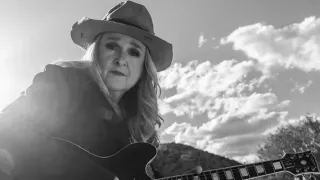February 7, 2017
Sea of Common Catastrophe
TK Hadman READ TIME: 3 MIN.
"Sea of Common Catastrophe" is a riveting, elegiac modern dance performance that meditates on destructive forces that impacted New Orleans' inner cities. While exploring themes of displacement, gentrification, loss and adaptation, the production has a strong narrative voice, supported by additional original art in the form of light projections, music, and poetry.
The performance is evocative of a certain sort of wistfulness, of peering into memory. Clara, played by Mahalia Ab�o Tibbs, considers the poetic advice of her grandmother, presented in a voiceover. She "listens" to objects, like holding up a seashell to one's ear. Tibbs's emotional range and depth is key as we navigate community upheaval.
No moments are wasted in relaying moods and ideas, as dancers interact with props and the set as much as each other. Fraught interactions with money and material possessions indicate struggles with poverty. Population dense, majority black neighborhoods were the most neglected in the aftermath of Hurricane Katrina, so it stands to reason that these communities are represented here.
Like memories, characters have specific, ongoing relationships with particular items. Tobias, played by Lisa Moraschi Shattuck, often holds nostalgia and wonder for objects encountered. Spry and immediate, Shattuck builds and maintains optimism and energy that is a counterpoint to Clara's decisive calm.
Even before the hurricane, gentrification and business interests descend upon the historic, urban community. Played by Jeffrey Gunshol, Mr. Herbert is an evolving figure representing those destructive forces. Dancing dark and heavy under the weight of the flood, the final form of Mr. Herbert sports a valise cut with holes. Resembling both a deep-sea diver's helmet and a television, the movement formulates a critique on the destructive and overbearing nature of capitalism.
In contrast, Perpetua and Do�a Tea are protective mother figures, played by Kathy Rendals and Adella Gautier, respectively. They seek to preserve community artifacts from exploitation and knit together Clara and Tobias as a family unit. The two create a seamless performance by merging the two characters into one role.
The clever, almost efficient set design is not elaborate but details matter. Cardboard boxes act as a backdrop and create the shingle-like texture of a roof. Dancers rifle through the boxes searching for items and access the memories contained within.
As we explore deeper into Clara's experience, a drawbridge lowers, overpowering her and foreshadowing the impending flood. Later on, structures rotate to reveal an organza overlay suggesting water. The drawbridge door becomes a raft while Clara, Tobias, and Perpetua nearly drown until boxes descend for them to float on.
Motifs are supported by visuals in the form of light projections designed by artist Courtney Egan, animation via projection mapping by Lucien Levi. The images have a bold, folk art quality to them, while various objects are set adrift in the water.
Sound supports our explorations using original vocal work by the ensemble and litanies of poetry by Jessica Henrickson. Iterations and harmonies build nuance, allowing us to connect fully with each character.
Gentrification sees people and environments as commodities, which often leads to neglect, quality of living disparities, and racial injustice as long time residents are displaced. "Sea of Common Catastrophe" effectively engages this conversation by highlighting the effects of attitudes that don't value the existing history of a community. Catch this production before these Louisiana-based artists hit the road.
"Sea of Common Catastrophe" runs through February 12 at 7 Stages Theatre, 1105 Euclid Ave, Atlanta, GA 30307. For tickets and information, call 404-523-7647 or visit 7stages.org.






